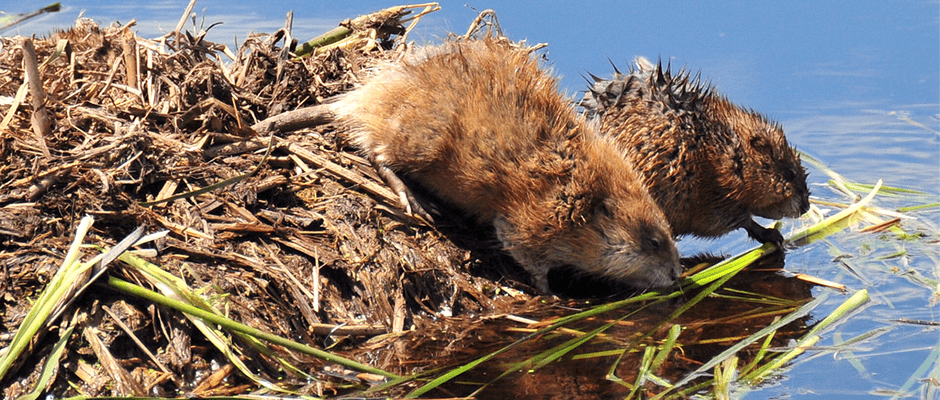Share this article
JWM study: Evidence shows muskrats declining in U.S.
Trappers and furbearer biologists have been reporting since the mid-1980s that muskrats (Ondatra zibethicus) seemed to be appearing in fewer and fewer numbers, but they only had anecdotal evidence, until now.
In a recent study published in the Journal of Wildlife Management, researchers found evidence of these declines from 1970 to 2012.
“I’ve been working with muskrat populations since 2007 and was hearing of these declines from trappers,” said Adam Ahlers, an assistant professor at Kansas State University and lead author of the study, who is also a TWS member. “Also, the wetlands that I used to trap muskrats in when I was younger don’t have the populations that were there historically. So I was generally curious about potential muskrat declines elsewhere.”
In the study, Ahlers used muskrat harvest data available on the Association of Fish and Wildlife Agencies website collected by furbearer biologists in 37 states. They then controlled for annual pelt prices, because when pelt prices were high, there were more muskrat trappers and harvests, he said. After correcting for these effects, “we still observed declines,” Ahlers said.
The most dramatic declines in harvest occurred in the late 1980s, Ahlers said, particularly in the southeast.
Ahlers said they don’t yet know why the species is declining, although researchers have a few hypotheses to test.
One of these hypotheses is habitat loss or habitat isolation. Muskrats depend on wetlands, Ahlers said, and wetland loss is prevalent in the U.S. Remaining habitats might also be degraded or functionally isolated, causing muskrat declines.
Another possibility is the changing hydrology hypothesis, which suggests that environmental change is affecting wetlands as a result of anthropogenic changes in hydrology or extreme precipitation and drought events. “Land use change and climate change effects have increased flooding and drought, which might have something to do with these declines,” he said.
Ahlers said his lab is currently working on a project to test these hypotheses. Meanwhile, he suggests managers create better quality wetlands and conduct large-scale and unbiased studies on abundance trends to be used in the future. These efforts will likely require collaborations from many agencies to investigate potential regional trends and to make results comparable to other regions in the United States.
Header Image: A muskrat pair feeds on Lakreek National Wildlife Refuge in South Dakota. ©Tom Koerner/USFWS








